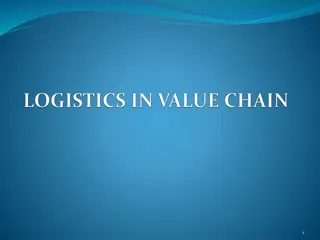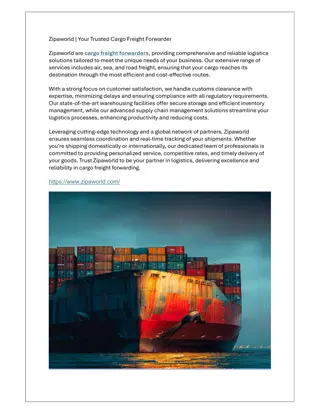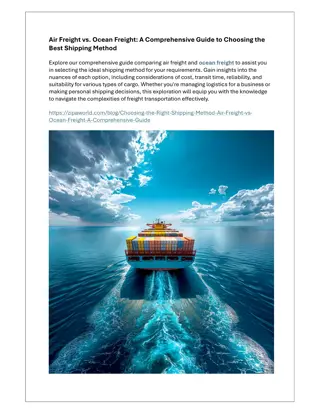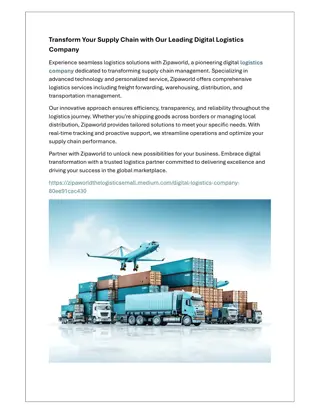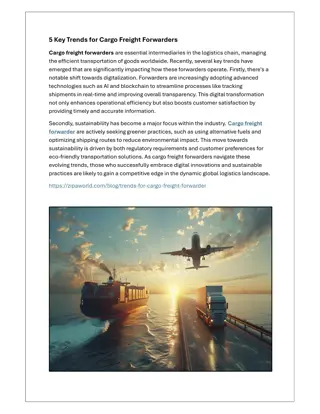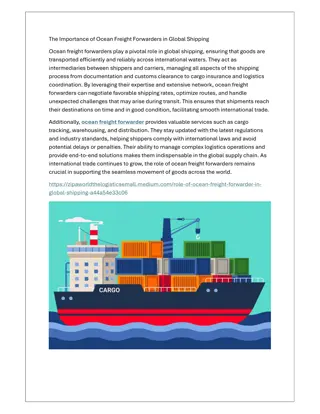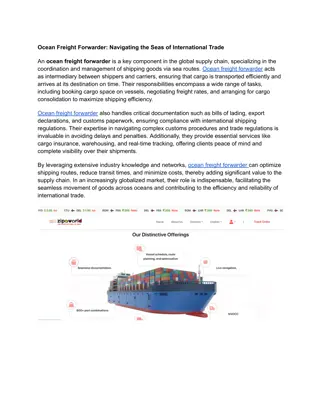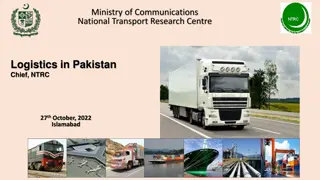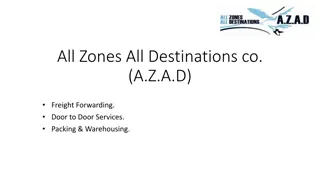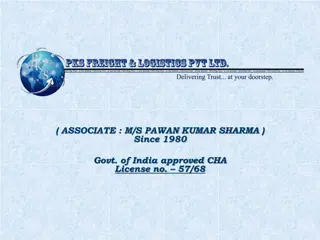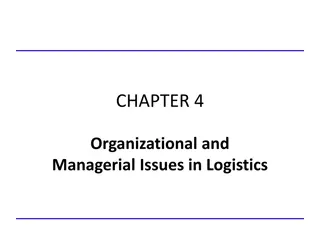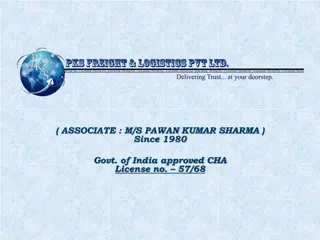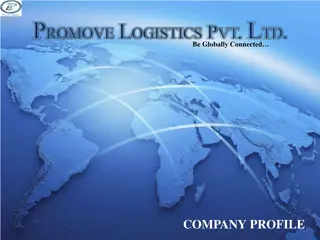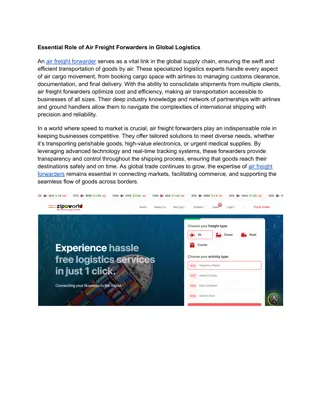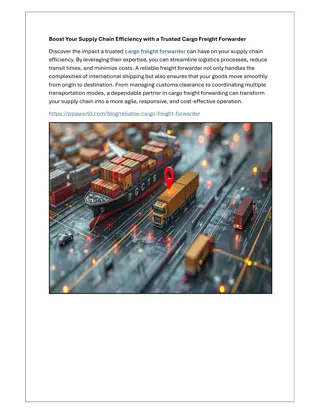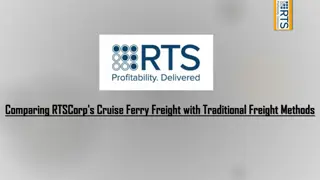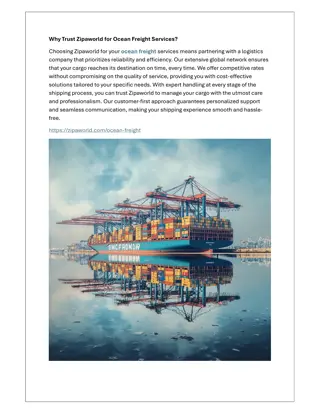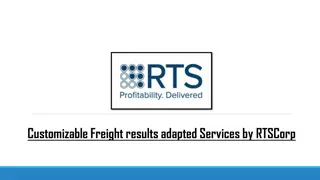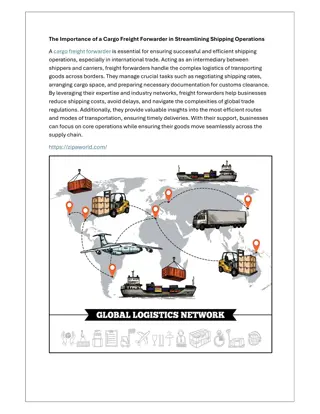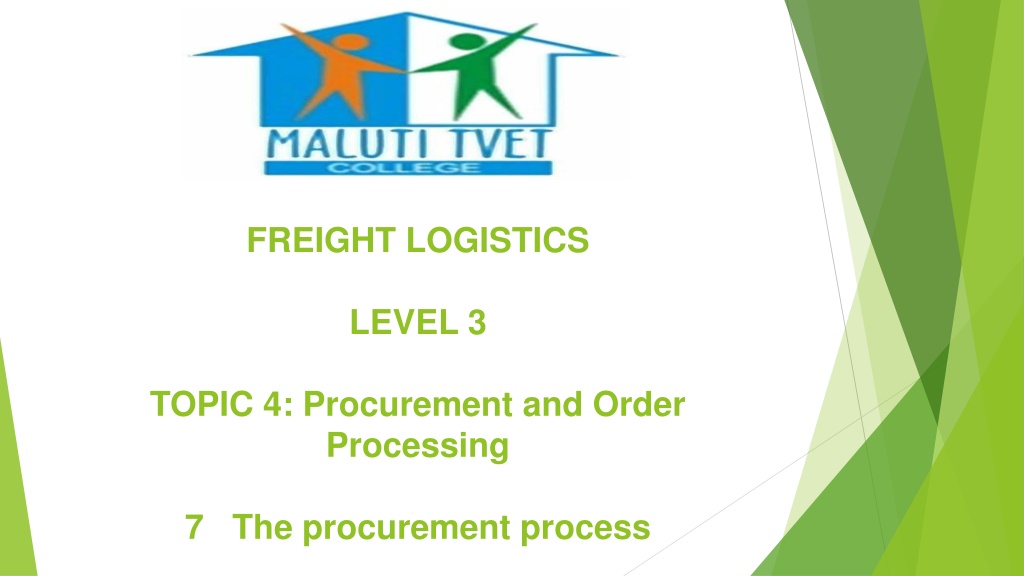
Understanding the Procurement Process in Logistics
The procurement process in logistics involves essential elements such as purchasing, payment options, tender processes, and policy regulations. It encompasses concepts like value for money, open competition, ethics, and accountability. Procurement in the public sector follows core principles like the five Pillars of Procurement. The Purchasing Department plays a crucial role in managing internal requisitions and purchasing materials. Efficient procurement is vital for the financial sustainability of a business.
Download Presentation

Please find below an Image/Link to download the presentation.
The content on the website is provided AS IS for your information and personal use only. It may not be sold, licensed, or shared on other websites without obtaining consent from the author. If you encounter any issues during the download, it is possible that the publisher has removed the file from their server.
You are allowed to download the files provided on this website for personal or commercial use, subject to the condition that they are used lawfully. All files are the property of their respective owners.
The content on the website is provided AS IS for your information and personal use only. It may not be sold, licensed, or shared on other websites without obtaining consent from the author.
E N D
Presentation Transcript
FREIGHT LOGISTICS LEVEL 3 TOPIC 4: Procurement and Order Processing 7 The procurement process
7.1 key concepts 7.1.1 Purchasing: the activity of acquiring(buying) goods or services to accomplish the goals of an organization -the concept purchasing also relates to all other functions, processes and procedures that are associated with the purchase of goods and services, 7.1.2 Payment options: Refers to the different methods that are available for
settling of purchase. Simply put, how one can pay for the purchase, 7.1.3 Tender process: A tender process ensures that the best supplier is chosen from those who offer their goods or services to the customer for the best value of money, 7.1.4 Policy regulating processes: Policy regulating processes mean that for every industry, there are specific policies and processes that govern it. Very often, these include
- Legislation -guidelines -Standard Operating Procedures -ISO quality standards 7.2. Procurement processes and related aspects 7.2.1 Procurement in the public sector -Proper and successful government procurement is based on certain core principals, namely the five Pillars of Procurement
# Value for money # Open and effective competition # Ethics And fair dealings # Accountability and reporting # Equity - These principles prescribe a minimum set of standards that are to be observed by all involved in public procurement 7.2.2 General procurement processes -Actual purchases are usually made by the Purchasing Department and headed by a general Purchasing Manager
-In small-and medium sized companies department heads or supervisors may have the authority to purchase materials or services as the need arises. -The procurement process may include the preparation of an order as well as the end receipt and approval of payment, -A business will not be able to survive if the cost of procurement is more than the profit it makes on selling the actual product,
7.2.3 The Purchasing Department -The Purchasing Department is responsible for internal requisition (order) processing and the purchasing of these materials, supplies and/or equipment Functions of the Purchasing Department -The Purchasing Department has to stay informed about issues such as the sources of supply, prices, transport and delivery schedules and placement purchase orders
-They also have to ensure that there adequate (sufficient) and systematic (structured) reports amongst the different departments -They Purchasing Department additional function is to verify and approve payments for all invoices received. -The same person who prepares the order never approves the invoice. This may lead to problems with internal procurement procedures and even fraud.
Payment Options -Most purchasing departments or companies set a purchase limit that can only be exceeded once approved in a specific way, -These purchase limits are used to ensure strict financial control and to reduce the workload an the Purchasing Department for low value purchases by shifting responsibility to the head of Buying Department -There is a variety of payment options available to settle purchases
# Cash on delivery (COD) # Cheques # Electronic fund transfer (EFT) # Real time clearing (RTC) # Telegraphic transfer # Bank draft # Documentary credits/letter of credit # Documentary collections/foreign bills for collection -This will be discussed in detail later in de topic
*Please complete Activity 9 on page 90-91,any questions can be asked via WhatsApp.


